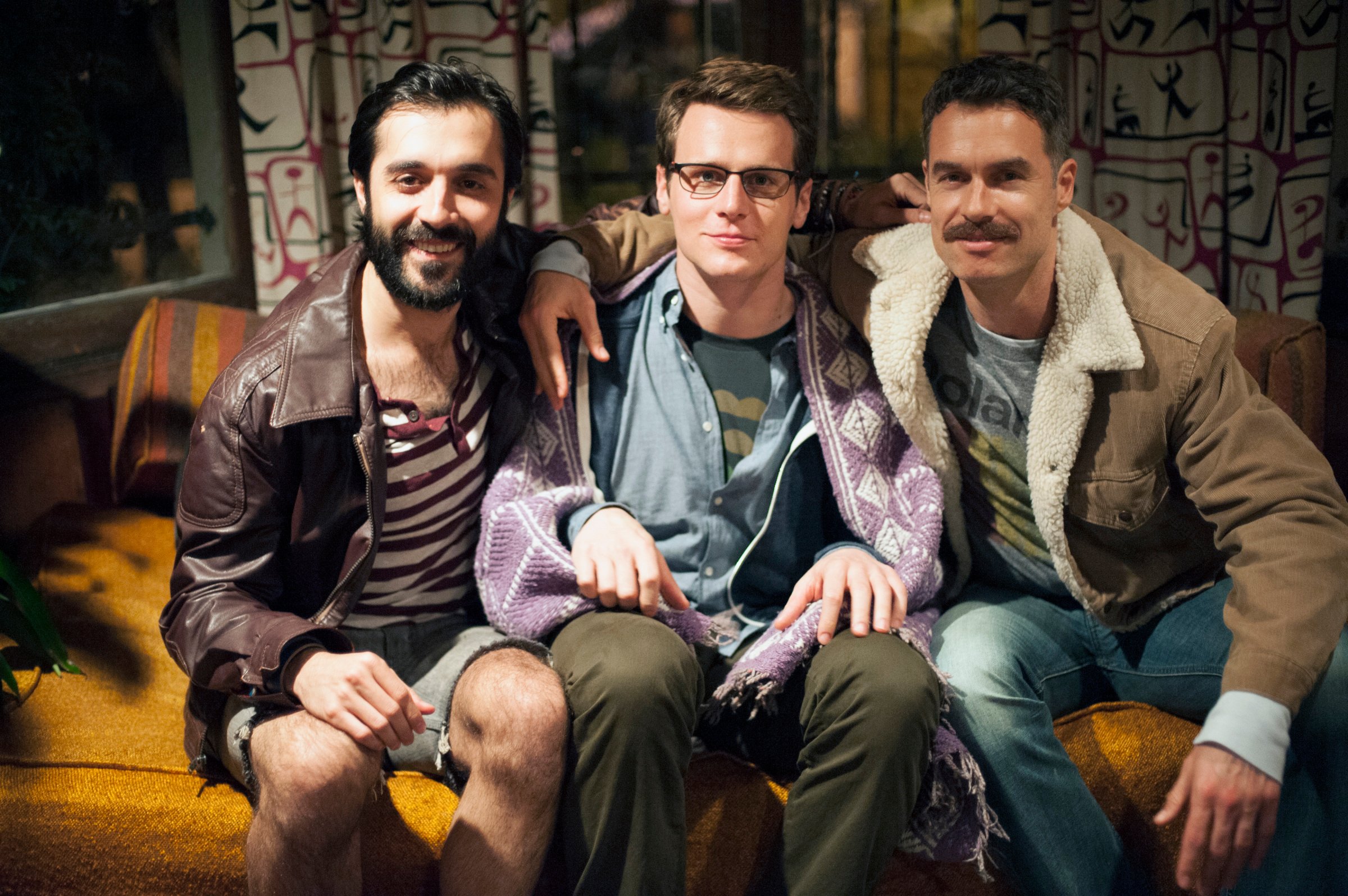
According to the advance buzz for HBO’s newest urban-singles dramedy, Looking is “the gay Girls.” Girls, of course, was “the hipster Sex and the City.” Sex and the City was “the female Seinfeld.” Which, by the transitive property of television, I guess makes Looking the gay Seinfeld? (Not that there’s anything wrong–oh, it’s too easy.)
Comparisons may be ridiculous, but they’re not useless. This low-key, stealthily charming half-hour is not any of its predecessors, whether about gay or straight characters; it’s less overtly comic than even Girls, there’s no ha-ha flamboyance, no melodramatic coming-out story, no self-aware feeling of transgressiveness. But in its story of three friends in San Francisco, Looking builds on the themes of its forebears–the observational comedy, the romantic foibles, the sense of how a big city can dangle dazzling treasures just out of your reach–while adapting them to a style of TV that’s less like a sitcom than an indie film.
The central trio includes Jonathan Groff as Patrick, a sweet, slightly awkward videogame designer whose roommate Agustin (Frankie J. Alvarez), a budding artist, is about to move in with his boyfriend in Oakland. Rounding out the group is Dom (Murray Bartlett), who wants to open a restaurant but is hearing the tick-tick-ticking of his 40th birthday while still waiting tables at Zuni Cafe. Zuni, incidentally, is an actual acclaimed restaurant in San Francisco, a bit of local realism that–like Looking’s smart use of offbeat locations–somewhat recalls HBO’s Treme. Looking (which is shot in SF) isn’t telling a broader story of the city as Treme did, but it has the same grounding dedication to specificity, to showing the city as actually lived in.
And in a way, that’s also its approach to its characters’ lives as gay men. That is, their sexuality isn’t part of some high-concept premise (as in, say, The New Normal) or presented as revolutionary (say, Queer As Folk); it’s just an authentic part of who these characters are, how they live, and where they live. Its stories are informed by the fact that its characters are gay, but not dictated by it.
[That, by the way, may be a larger hopeful trend in presenting gay TV characters. The Australian comedy Please Like Me, which premiered last August on Pivot, treats its lead character’s coming out as part of his story–a big part of his life but not the sum of his story. And Looking debuts the same week as FX’s animated comedy Chozen, in which Bobby Moynihan voices a gay rapper on the comeback trail. The show can be raunchy, and the show has fun with transposing the macho heterosexual clichés of rap stardom to a macho gay protagonist, but those jokes are only a part of the show.]
So we first meet Patrick fumbling through an awkward hookup with a stranger in the park, but rather than being played for scandalousness or poignance, it becomes a funny introduction to a guy who’s trying to work out who he is. Is he the kind of guy who cruises in the park? Does he want long-term love? Groff plays his journey of self-discovery with disarming, clumsy sweetness, as when he tells his friends he might be looking for a “fuck buddy” but half-swallows the words in embarrassment. Likewise, Dom’s early stories–running into a successful, obnoxious old flame, hooking up with a string of young hotties–are driven by the frustration that he’s still serving wine to “tech assholes” with more money than taste. “It’s like 1999 again,” he says, “and I hated them the first time.” Agustin is the least developed of the three early on, but his own romantic issues–he and his lover are not necessarily on the same page as to how open their relationship is–seem related to his larger lack of direction in life.
Refreshingly, Looking doesn’t contort itself to create a character to represent every different aspect of “the gay experience.” In the first four episodes, there are few female characters, gay or straight, an exception being Lauren Weedman as Dom’s hometown friend and confidante. (The show does avoid the relentless whiteness that Girls has been criticized for, including several prominent Latino characters.)
Yet even through the minor age difference in the lead characters (Patrick is 29, Dom 39) Looking organically gives a sense of how much has changed in a mere decade for these men. Patrick lives in a world where he can attend his ex’s engagement party and the significance is nothing more than–well, he’s attending his ex’s engagement party, which kind of sucks. (This even though, as creator Michael Lannan has noted in an interview, same-sex marriages were not legal in California when he wrote the pilot.) He can just be matter-of-fact that this is his reality. That reality may be distinctive and specific, like the Pacific light and impossible steep hills of San Francisco. But in the end, it’s just where he lives.
More Must-Reads From TIME
- The 100 Most Influential People of 2024
- Coco Gauff Is Playing for Herself Now
- Scenes From Pro-Palestinian Encampments Across U.S. Universities
- 6 Compliments That Land Every Time
- If You're Dating Right Now , You're Brave: Column
- The AI That Could Heal a Divided Internet
- Fallout Is a Brilliant Model for the Future of Video Game Adaptations
- Want Weekly Recs on What to Watch, Read, and More? Sign Up for Worth Your Time
Contact us at letters@time.com